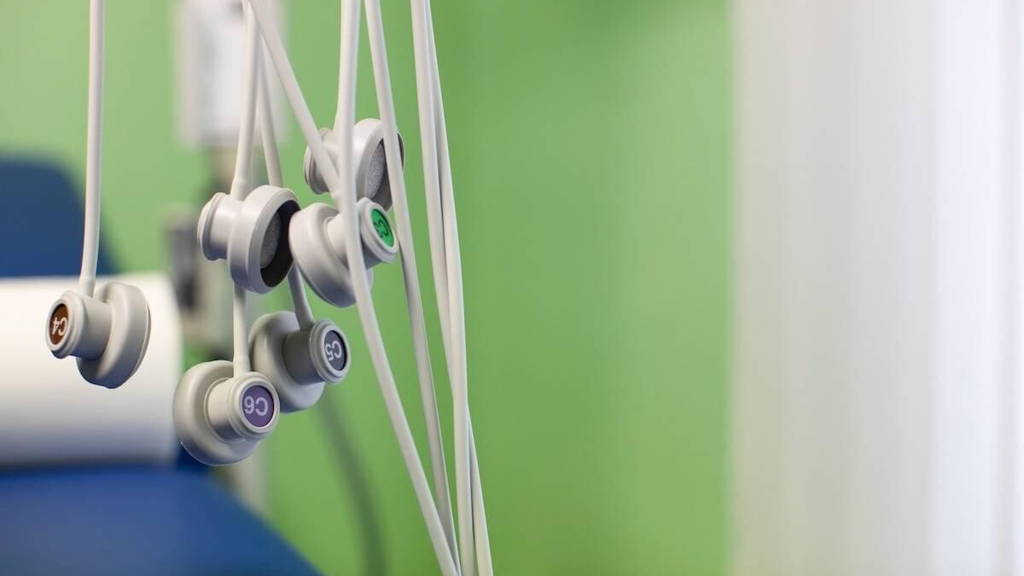In rural or remote regions, where medical capacity is under pressure, technological innovation offers an answer to the growing shortage of quality care. Researchers at the Fraunhofer Institute for Reliability and Microintegration (IZM) are developing a revolutionary radar-based sensor system for contactless patient monitoring. This technology makes it possible to record vital signs, such as heart rate and breathing, remotely and without body contact.
With a traditional ECG, electrodes are placed on the body, connected by cables. For certain patient groups - think highly infectious or patients with burns - this is difficult or even impossible. For these groups, non-contact radar technology offers a solution.
High-frequency electromagnetic waves
The radar-based ECG system works with high-frequency electromagnetic waves that reflect off the chest, detecting micro-movements created by cardiac and respiratory activity. Unlike traditional ECG systems, which require electrodes and cables, this non-contact approach offers a patient-friendly alternative. This also makes the system ideally suited for vulnerable groups such as burn patients, people with skin allergies or infectious diseases such as COVID-19.
The integration of the radar system into a compact plastic housing allows it to be easily placed under a hospital bed, recording vital data even through mattresses and blankets. The technology is designed for maximum flexibility: the system can be attached to walls or ceilings in the future, and is expandable for the simultaneous monitoring of multiple patients.
More comfort, less workload
This form of continuous, non-invasive monitoring not only increases patient comfort but also relieves the burden on healthcare personnel. Manual actions such as applying electrodes or repositioning equipment are eliminated. In addition, the technology enables early detection of cardiovascular and respiratory abnormalities, increasing the likelihood of timely intervention.
During clinical trials in cooperation with Thiem-Research GmbH, the technology proved capable of reliably capturing cardiac and respiratory signals in patients in various positions. The second development phase of the project, supported by the BMBF, is now focusing on a multichannel solution, which allows multiple patients to be monitored simultaneously.
“Our radar solution offers a future-proof route to smart, patient-centric monitoring, with applications from hospitals to nursing homes and even vehicles,” said Prof. Ivan Ndip, head of the RF & Smart Sensor Systems Department at Fraunhofer IZM. “This is care at a distance, but with maximum proximity.” With partners such as the Brandenburg University of Technology, the Ferdinand-Braun-Institut and the Leibniz IHP, this project highlights the power of technological cooperation for sustainable and accessible care.
Wireless monitoring
The concept of wireless monitoring an sich is not new. For several years, for example, we have known about bedside and other sensors deployed to monitor patients. In 2020, a pilot with the EarlySense bed sensor was already running at Ziekenhuisgroep Twente (ZGT). That was also able to contactlessly monitor both breathing and heart rate of patients.
Just last month we reported on the research and pilot project that hospital Rijnstate is currently conducting to determine whether the smart SafeSense3 sensor mat can support nurses in their work. The mat detects movement via changes in air pressure and sends this information directly to a dashboard. Nurses can then see at a glance whether a patient is in bed, calm or moving a lot. If necessary, an alarm can also be set, for example, if someone wants to get out of bed or just change position.









